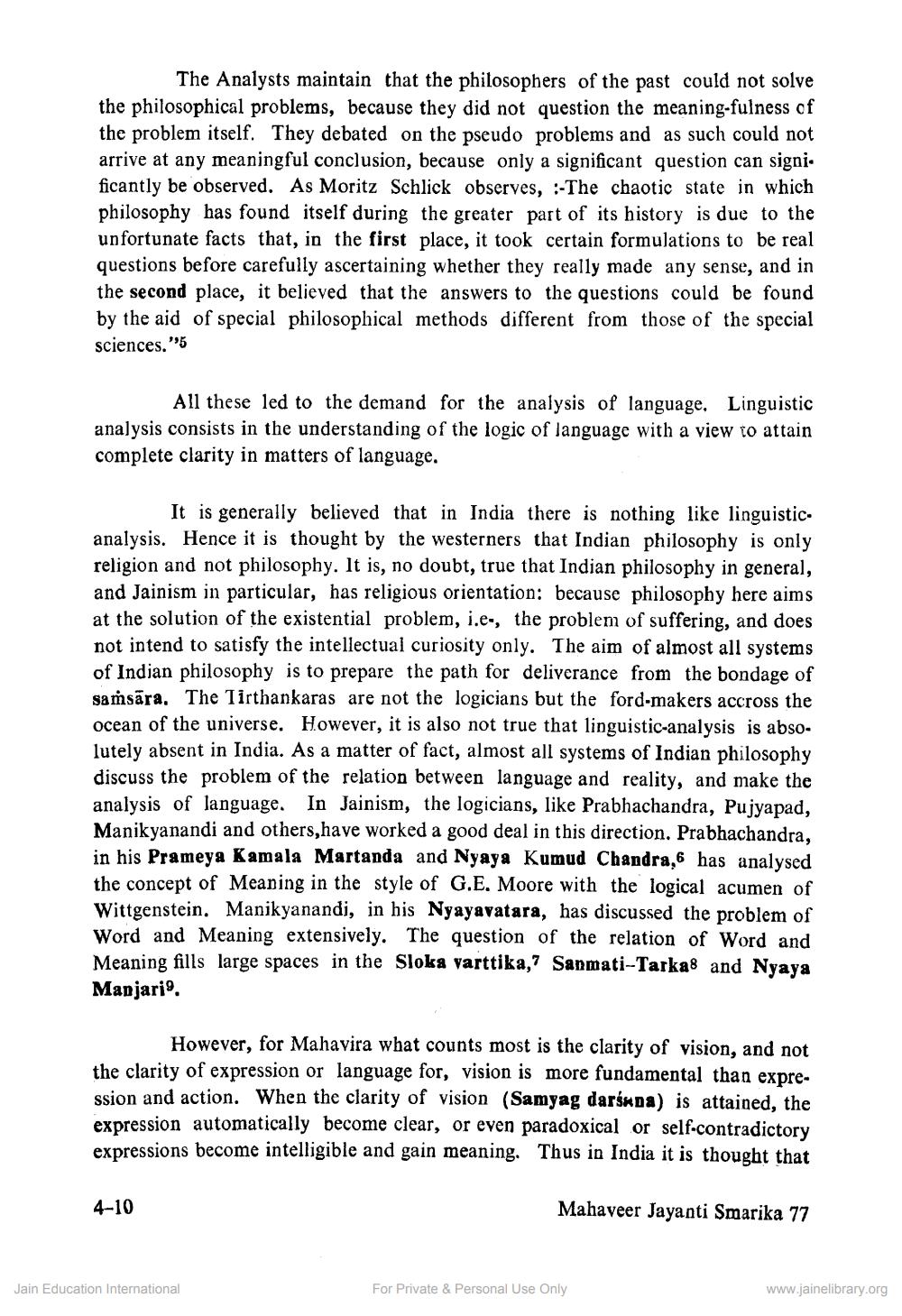________________
The Analysts maintain that the philosophers of the past could not solve the philosophical problems, because they did not question the meaning-fulness of the problem itself. They debated on the pseudo problems and as such could not arrive at any meaningful conclusion, because only a significant question can signi. ficantly be observed. As Moritz Schlick observes, :-The chaotic state in which philosophy has found itself during the greater part of its history is due to the unfortunate facts that, in the first place, it took certain formulations to be real questions before carefully ascertaining whether they really made any sense, and in the second place, it believed that the answers to the questions could be found by the aid of special philosophical methods different from those of the special sciences."5
All these led to the demand for the analysis of language, Linguistic analysis consists in the understanding of the logic of language with a view to attain complete clarity in matters of language.
It is generally believed that in India there is nothing like linguistic. analysis. Hence it is thought by the westerners that Indian philosophy is only religion and not philosophy. It is, no doubt, true that Indian philosophy in general, and Jainism in particular, has religious orientation: because philosophy here aims at the solution of the existential problem, i.e., the problem of suffering, and does not intend to satisfy the intellectual curiosity only. The aim of almost all systems of Indian philosophy is to prepare the path for deliverance from the bondage of samsāra. The Tirthankaras are not the logicians but the ford-makers accross the ocean of the universe. However, it is also not true that linguistic-analysis is absolutely absent in India. As a matter of fact, almost all systems of Indian philosophy discuss the problem of the relation between language and reality, and make the analysis of language. In Jainism, the logicians, like Prabhachandra, Pujyapad, Manikyanandi and others have worked a good deal in this direction. Prabhachandra, in his Prameya Kamala Martanda and Nyaya Kumud Chandra,6 has analysed the concept of Meaning in the style of G.E. Moore with the logical acumen of Wittgenstein. Manikyanandi, in his Nyayavatara, has discussed the problem of Word and Meaning extensively. The question of the relation of Word and Meaning fills large spaces in the Sloka varttika,7 Sanmati-Tarka8 and Nyaya Manjari'.
However, for Mahavira what counts most is the clarity of vision, and not the clarity of expression or language for, vision is more fundamental than expression and action. When the clarity of vision (Samyag darskpa) is attained, the expression automatically become clear, or even paradoxical or self-contradictory expressions become intelligible and gain meaning. Thus in India it is thought that
4-10
Mahaveer Jayanti Smarika 77
Jain Education International
For Private & Personal Use Only
www.jainelibrary.org




